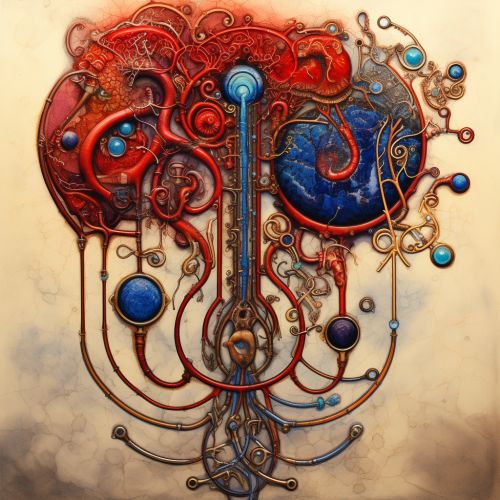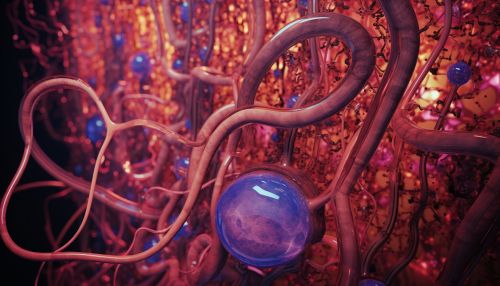Nephron
Anatomy and Structure
The nephron is the fundamental functional unit of the kidney, responsible for the filtration, reabsorption, and secretion of solutes necessary for the body's homeostasis. Each kidney contains approximately one million nephrons, each of which is a complex tubular structure composed of two main parts: the renal corpuscle and the renal tubule.


The renal corpuscle, located in the renal cortex, is the initial filtering component of the nephron. It consists of two structures: the glomerulus and Bowman's capsule. The glomerulus is a network of tiny blood vessels, or capillaries, where the filtration of blood takes place. Bowman's capsule, a cup-like sac, surrounds the glomerulus and collects the filtrate.
The renal tubule is a long, convoluted structure that extends from the renal corpuscle and is divided into three main segments: the proximal tubule, the loop of Henle, and the distal tubule. The proximal tubule is the first part of the renal tubule and is responsible for the reabsorption of the majority of the filtrate back into the bloodstream. The loop of Henle, a U-shaped structure, plays a crucial role in the concentration of urine. The distal tubule, the last part of the renal tubule, further modifies the filtrate by secreting and absorbing different solutes.
Function
The primary function of the nephron is to regulate the concentration of water and soluble substances in the body by filtering the blood, reabsorbing needed substances, and excreting the rest as urine. This process is carried out through three main steps: glomerular filtration, tubular reabsorption, and tubular secretion.
Glomerular filtration is the first step in urine formation. It occurs in the renal corpuscle and involves the filtration of blood under high pressure, resulting in the formation of a protein-free filtrate known as glomerular filtrate.
Tubular reabsorption is the process by which most of the glomerular filtrate is reabsorbed back into the bloodstream. This process occurs primarily in the proximal tubule, but also in the loop of Henle and distal tubule.
Tubular secretion is the process by which substances are actively secreted from the blood into the renal tubule. This process occurs primarily in the distal tubule and collecting duct and helps in the elimination of waste products and the regulation of pH.
Clinical Significance
Nephrons play a crucial role in maintaining the body's internal environment. Any damage or disease that affects the nephrons can lead to serious health problems. For example, chronic kidney disease (CKD) is a condition characterized by the gradual loss of kidney function over time, which is often due to the damage of nephrons.
Acute kidney injury (AKI), formerly known as acute renal failure, is another condition that involves damage to the nephrons. It is characterized by a rapid decrease in kidney function, which can lead to the accumulation of waste products in the blood.
Glomerulonephritis, an inflammation of the glomeruli, and Polycystic kidney disease, a genetic disorder characterized by the growth of numerous cysts in the kidneys, are other examples of conditions that can affect the nephrons and consequently impair kidney function.
